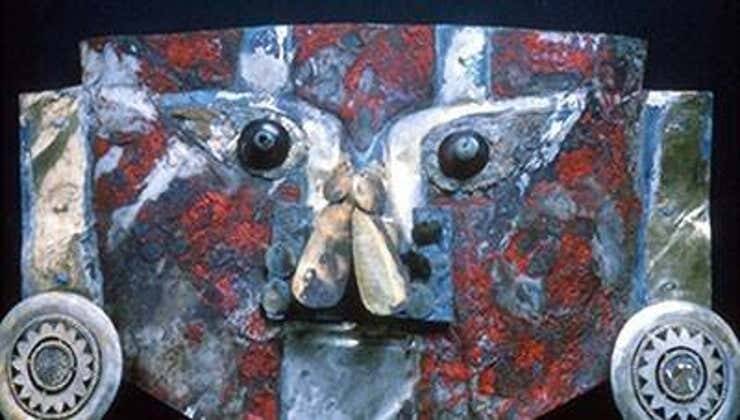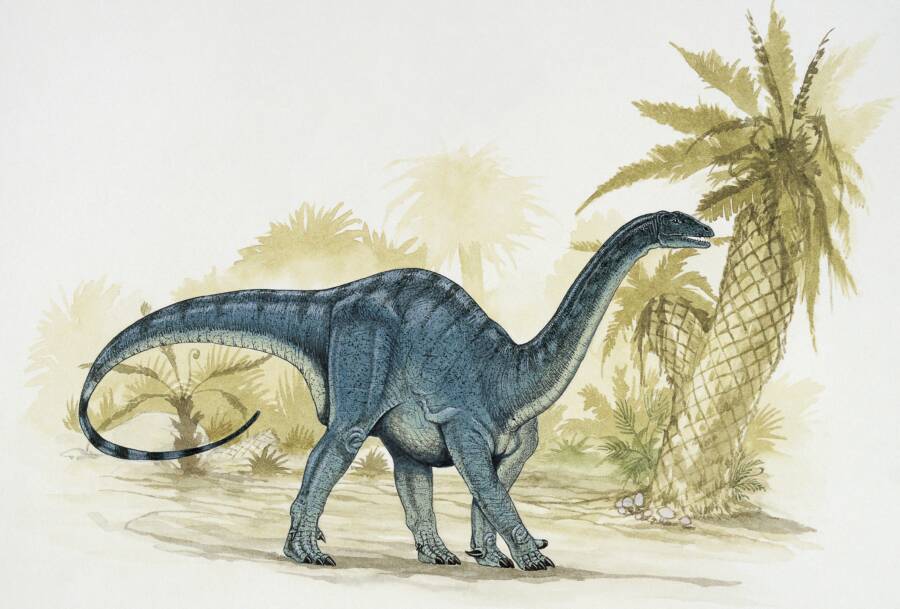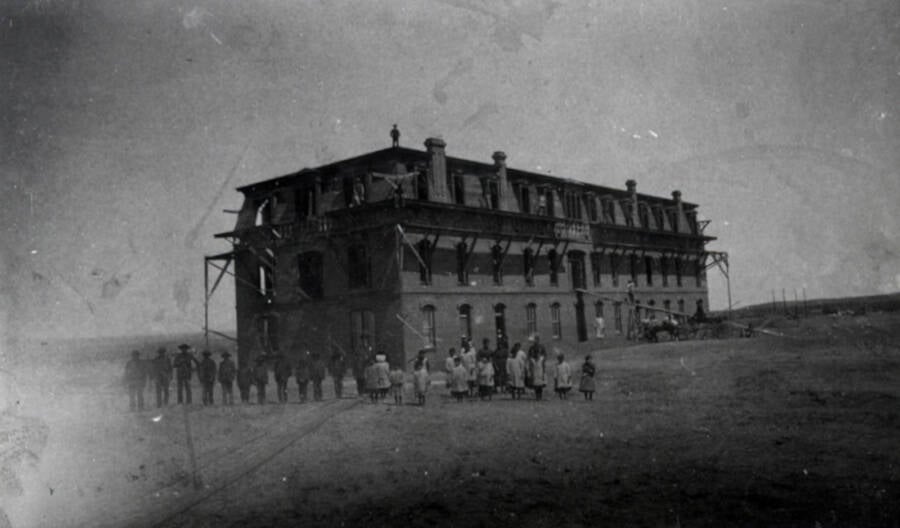Paint on ancient Peruvian mask found to contain human blood, massive nest of dinosaur eggs uncovered, search for bodies at Native American forced assimilation school begins.
Ancient Funerary Mask Painted With Human Blood Found In A Macabre Burial In Peru

Journal of Proteome ResearchResearchers initially thought this mask’s paint was made with a relatively common pigment known as cinnabar — but new analysis has just revealed that the secret ingredient was actually human blood.
Researchers had long been mystified by the red paint found on a funerary mask taken from the skull of a Sicán elite who was buried 1,000 years ago in present-day Peru. More than anything else, experts were baffled as to how the paint had stayed so intact for a millennium.
But a new analysis has just revealed the secret ingredient — human blood. It turns out that blood is an exceptional binding agent that allowed this mask to weather the centuries far better than other painted objects of the era.
Learn more here.
A 193-Million-Year-Old Dinosaur Nest Containing Eggs With Intact Embryos Was Just Discovered In Argentina

De Agostini/Getty ImagesAdult Mussaurus patagonicus specimens weighed 1.5 tons and moved in age-segregated herds to protect the whole group from predators.
Moving in herds has been a lifesaving evolutionary trait of herbivores for millions of years, as traveling in large groups provides for more protection from predators. Remarkably, researchers in Argentina have just discovered the earliest evidence that dinosaurs did the same — 40 million years earlier than they initially theorized.
During an examination of a 193-million year old dinosaur graveyard researchers discovered over 100 eggs, some with embryos still intact, and 80 skeletons, all from a distant cousin of the Brontosaurus called Mussaurus patagonicus.
Dig deeper in this report.
City Officials Plan To Search For Bodies At Site Of Former New Mexico Indian School

Albuquerque Museum, gift of Center for Southwest Research, University Libraries, University of New MexicoStudents standing in front of the Albuquerque Indian School circa 1880.
Throughout summer 2021, indigenous people in Canada used ground-penetrating radar at former “Indian” schools to discover the bodies of hundreds of missing students. Now, the city of Albuquerque is determined to do the same on the grounds of the defunct Albuquerque Indian School.
“This is important because we have an opportunity to learn and understand from our collective history and make meaningful change,” said Rebecca Riley, a member of Albuquerque’s Commission on American Indian and Alaska Native Affairs.
“We deserve to understand the truth, determine our steps forward, and owe the Native children and staff who never returned home to do better.”
Read on here.





